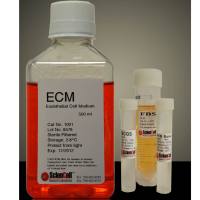Culture of Human Brain Tumors on an Extracellular Matrix Derived from Bovine Corneal Endothelial Cells and Cultured Human Glioma Cells
互联网
484
Cell culture has become an integral part of the daily routine of most oncology laboratories. It has enabled researchers to investigate a wide range of cellular parameters in a defined system in which the experimental conditions can be controlled and repeated. Although the manufacturers of tissue culture materials are continually improving their products, cell attachment and initial survival of primary cultures from tumor cells are still problems in many laboratories. Many different approaches have been taken to circumvent this problem, and coating of tissue culture dishes with attachment enhancers, such as polyamino acids (1 ), fibronectin (2 ), laminin (3 ), and collagen (4 ), has been found helpful. For a long time, it was known that endothelial cells produce a basement membrane, and this led to the use of bovine corneal basement membrane by Gospodarowicz et al. (5 ,6 ), in their research into the phenomenon of regeneration and nonregeneration of corneal endothelium in different species. The application of this bovine corneal extracellular matrix (bECM) has since been greatly expanded (5 ,6 ). bECM has found broad approval, and has been used for mammary carcinoma (7 ), urological tumors (8 ), and different kinds of pituitary adenomas (9 ,10 ) as well as CNS tumors (11 ).









